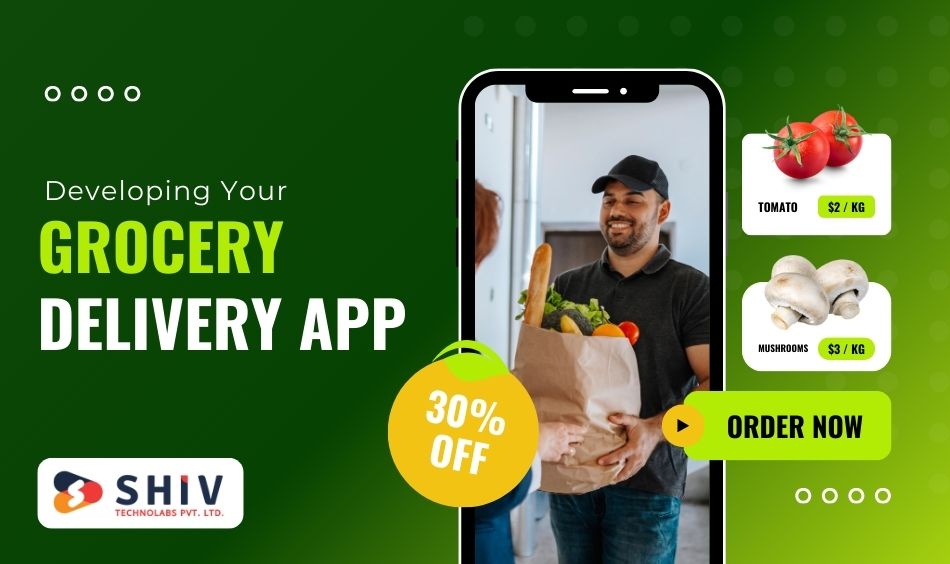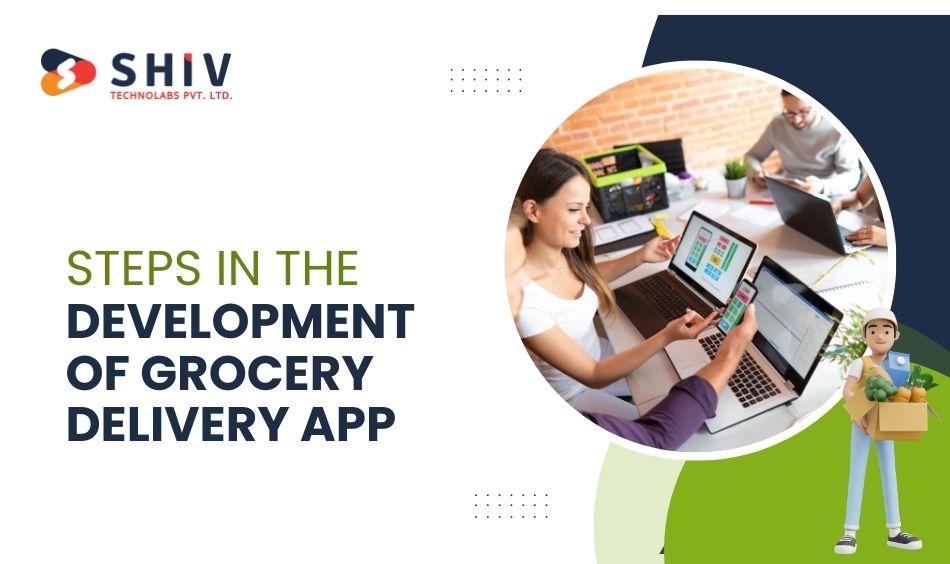Table of Contents
Shopping for groceries used to be standing in queues at the supermarket. Or, having to stand among the crowd at the local grocery stores. But, with on-demand grocery delivery apps, those days are a matter of the past! These apps have brought the convenience of grocery shopping to the doorstep of customers. And, it has given rise to the online retail grocery delivery business.
The era of digitalization has transformed the way people go about their regular lives. It now includes shopping for groceries as well. On-demand grocery delivery business has become a major success across large and small cities. And, there’s still a huge market to tap into. So, if you have been planning on getting into this business, start by checking out the best grocery app development company to hire.
Grocery Delivery Business Models
Before you start with app development, it is important to have your business model set up. There are a few different business models that you can choose from. It will depend upon available resources and funds. Let us first check these business models in detail:
# Multi-Vendor Marketplace Model
This model is also known as the zero inventory model. In this business model, multiple vendors are connected and a collaboration is created. The local vendors are taken into account. They sell their products through a common e-commerce platform. This delivery app allows buyers to buy items from local vendors but with the convenience of ordering from home.
This business model generally works on a commission or subscription basis. The revenue is generated through listing fees, membership fees, advertisement fees, and other fees.
# Inventory Model
In this model, the grocery delivery app owner is the one who maintains the entire inventory. The application acts as a platform for customers to order products. Generally, the app owner sources products from various dealers and distributors and maintains the stock. The logistics are also maintained by the owner. The revenue generation is directly through sales of the products. Additional sources of revenue can be in the form of subscriptions to priority services by the customers or in the form of membership programs.
# Subscription Model
The subscription model works with exclusively paid services. The subscription can be monthly, quarterly, half-yearly, annually, or as decided. The customers subscribe to services like faster delivery or free delivery. Even sellers can subscribe to get their products listed on the app. The products can be sourced from local vendors or can be sold by the app manager.
# Hyperlocal Model
This model also works with local grocers and stores. The grocery delivery app serves as the medium for the customers to find the nearest store having the desired product. Then the item is delivered with the help of delivery agents from the store once the order is placed. The revenue is generated through commissions from the stores to be listed as partners. Also, peak-hour delivery charges can be another source of income.
If you are considering setting up your grocery delivery business, you can get in touch with Shiv Technolabs for development services. You can discuss the available options as well. This will give a better idea about the most profitable business model.
Also Read: A Great Revenue Model of Online Grocery Delivery Startup Blinkit
Developing Your Grocery Delivery App

Now that you have a better idea about the various business models, you should be able to decide the one that suits your business idea. So, before you hire expert developers to start your grocery app development project, know what you should be including. These features will remain almost the same, no matter what business model you decide to follow. Discuss these deliverables with the grocery delivery app development services provider you will be working with.
# Product Listing
The primary job is to list all the available products along with their unit sale cost and the inventory volume. This needs to be managed by the person who will be selling the product. It will vary as per the business model you will choose. The product listing will also need to have the product image associated with it. Ensure that there is an option to have multiple images under each product, as multiple images might have to be uploaded for a single product.
The product listing will also require categorization. This is to ensure that the products are easy to find.
# Search Option
Users should be easily able to search for the products and sellers. Depending upon the business model you choose, the customers will be able to search by product, or by location of seller, or both. So, ensure that the relevant search options are available in the application.
# Cart Management
The shopping cart is a critical part of the application. Customers should be easily able to add products or remove them, as needed. It should be extremely easy to manage and view at all times. Also, there should be a record of the previously added products to allow easy access to the preferred products.
# Inventory Management
Inventory management is essential, no matter which business model you follow. It will allow both small and large retailers to easily keep track of the available stock of any product. Also, this should come with an option to be notified when the stock runs below a certain level for a product.
# Order Management
Once the order is placed, the notification needs to be sent to both the retailer and the delivery agent. This should be done instantaneously and in real-time. Also, it is essential to manage the allocation of the orders in a way that optimizes the utilization of delivery agents.
# Personalized Shopping Experience
Even with grocery shopping, improving the experience of the consumers is critical. This can be achieved with personalized experience. Features like product suggestions based on previous shopping, and other products that might be of interest as per the current shopping cart, can elevate the customer experience. Having these features is something you will need to discuss with the grocery app developers.
# Data and Analytics
User data is critical for future developments and scalability. It is also important for retailers to understand which products are in demand and which are the preferred choices of their customers. Depending upon the role, data and analytics need to be shared with the sellers as well as the owner of the application.
# Delivery Tracking
Delivery status and tracking features need to be incorporated. It has become a standard feature that every customer now expects. When you hire a grocery app development company, make sure that you discuss the integration of tracking features.
# Multiple Payment Modes
The payment gateway should be incorporated such that it can manage multiple payment modes. This allows flexibility in terms of payment options to the customers. This enhances customer experience further and reduces cart abandonment.
For more advanced features, discuss with Shiv Technolabs. You will get a clearer picture and can plan future integrations as well.
Steps In the Development of Grocery Delivery App

Now that you have the basic features listed, it is time to get ahead with the app development. As any grocery delivery app development services provider will tell you, the following are the basic steps in having your app developed.
- Market Research: Market research is crucial to understand what will work for your business. Just because a feature succeeded elsewhere doesn’t guarantee it will succeed for you. Start by identifying gaps in the market, then tailor your product to address those issues.
- Business Model Selection: Choosing the right business model is essential. Explore all options, and create a list of what’s feasible for you. Finalize the model that aligns best with your budget and available resources.
- Requirement Analysis: Finalize the features and conduct a requirement analysis. Compile a list of necessities for app development during this phase.
- Create Product Demo: With requirements and features in hand, ask your developer to create a product demo. This demo should illustrate the UI and UX, showcasing a mock flow within the app to finalize its look and feel before actual development begins.
- Development and Testing: Begin the development process, accompanied by ongoing testing to address bugs proactively. This stage requires significant time, as it involves designing and implementing the database as well.
- Release and Update: Once development is complete, release the app across mobile platforms and the web. Ensure that the application is responsive, capable of adapting to various devices and operating systems.
Future developments and scaling need further development cycles. You must keep your app updated with the latest features and technology. This ensures high security as well as a better customer experience.
If you are planning on developing your own grocery development business, you can connect with Shiv Technolabs. We provide end-to-end grocery delivery app development services and other on-demand app development as well. Connect to know more.


















